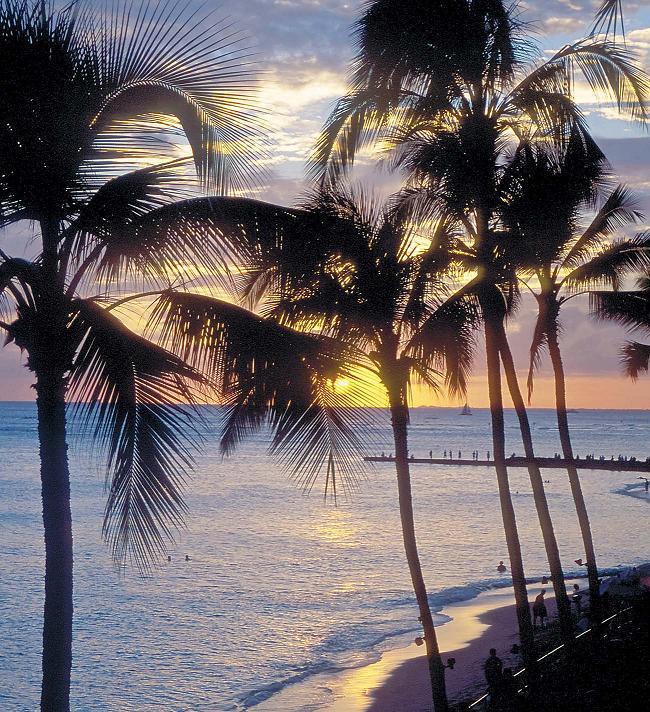The making of a president: Barack Obama’s Hawaii
By Lee Woo-youngPublished : Sept. 28, 2012 - 19:30
HALEIWA, Oahu ― If you’ve vacationed in Hawaii, you know the come-hither scent of flowers, the trade winds cooling the peaks and the warmth of the southern ocean.
Now imagine growing up here, where Barack Obama was born, exposed from the first to a culture where the impossible has evolved: a multi-racial society, tolerant of differences and busily pursuing the delights and challenges of daily life.
For voters still wondering why Obama stays cool, thinks things through and keeps an eye focused on peaceful solutions, look toward the 50th state. The “ah-hah!” clues to the man have been right here all along, waiting to be mined.
Obama’s background is an open book, writ large on the pages of Hawaii. Hawaiian islanders are color-blind from the cradle. The blend of races and cultures here, at work, at play, in school and in every neighborhood has been a fact since westerners arrived to mix with Hawaiians, and the Japanese and Chinese came to work in the sugar cane fields.
Now imagine growing up here, where Barack Obama was born, exposed from the first to a culture where the impossible has evolved: a multi-racial society, tolerant of differences and busily pursuing the delights and challenges of daily life.
For voters still wondering why Obama stays cool, thinks things through and keeps an eye focused on peaceful solutions, look toward the 50th state. The “ah-hah!” clues to the man have been right here all along, waiting to be mined.
Obama’s background is an open book, writ large on the pages of Hawaii. Hawaiian islanders are color-blind from the cradle. The blend of races and cultures here, at work, at play, in school and in every neighborhood has been a fact since westerners arrived to mix with Hawaiians, and the Japanese and Chinese came to work in the sugar cane fields.

Not that there aren’t problems. Caucasians applying for work are often passed over in favor of local residents. Chinese-Hawaiians stick together. Look twice at a newly-arrived Samoan and he or she will give you the “stink eye.”
But my lasting memories are of people unhurried enough to stop and explain why this or that restaurant serves the best huli huli chicken. Of passersby who sketch a map to show you the quickest route to Haleiwa. Or of folks who face problems with equanimity and solve them without drama. Michelle Obama said it best: “You can’t really understand Barack,” she told an interviewer, “unless you understand Hawaii.” If you’ve been there, you know what she means.
Before the last presidential campaign, travelers spent their time at the beach, rarely touring Honolulu’s inland neighborhoods. Since the election, however, a half-dozen tour companies have added an “Obama Tour,” focusing on places connected to the president. The homes where his mother and grandparents lived; Kapiolani Hospital, where he was born in 1961 (see his birth certificate at www.obamasneighborhood.com); the corner market where he stopped on the way home from school; the park where he and his friends shot hoops; and Punahou, his highschool.
Go online for a photo of Obama’s kindergarten class (www.obamasneighborhood.com). Lined up and smiling are five white children, seven mixed-race children, 12 full or mixed-origin Asian children, Obama, and three Japanese-American teachers. For these kids, the world looked international before they could read.
Think of their class picnic, the buffet table laden with parents’ contributions: spaghetti, pizza, teriyaki chicken, plate lunches, potato salad, spam musubi American Japanese), chow mein, malasadas (Portuguese) and hulihuli chicken (Hawaiian).
The parents and children would have been, at a minimum, all or part Portuguese, Spanish, mixed-European, Chinese, Japanese, Korean, Samoan and native Hawaiian. Was pidgin (the Hawaiian-English slang) a common denominator? I wish I knew.
“Do you think people are as color-blind as they seem?” I asked Darlene Morikawa, formerly with the State Tourism Office.
“Just about everyone here has inherited what I call potluck,” she said. “We’re proud of our individual heritage, but we’re Hawaiian first and foremast. That’s where we get our identity, our sense of who we are. I happened to catch Oprah when her guests, African Americans mostly, were talking about how it mattered if you were more brown, or less brown, or almost white. It really surprised me. I didn’t know that people on the mainland thought about color like that.”
My advice? After you’ve taken the tour, poke around on your own. Explore the island ― in the spirit of research, of course. Leave the hotel pool and head to the world’s largest ocean. Float on the swells. Embrace the waves.
By Anne Z. Cooke
(McClatchy-Tribune News Service)
(MCT Information Services)


















